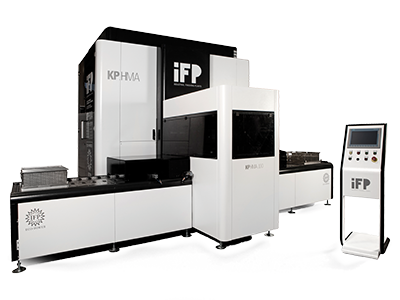Immersion Washing - A Good Choice for Challenging Part Geometries
Challenging Parts
When dealing with machined parts, the 3 most common problems are troubles related to cleaning tapped holes, blind holes and deep counter bores. These part features become increasingly problematic in small diameters. Add the need to clean parts in high volume, and the challenge gets even tougher.
Platform Choices
Two of the most common cleaning platforms are spray type and immersion type. In a spray washing platform, parts are sprayed from multiple directions as they are carried through the system on a linear conveyor or a rotary table. The parts travel through several stages. The first stage is wash, followed by rinse, followed by dry. In an immersion system, parts are immersed in water based detergent or solvent during the cleaning process allowing part features to be flushed with fluid. In most cases, immersion is a more effective way to clean as you are not relying on the proper orientation of spray nozzles to reach difficult internal features. When washing in an immersion system, parts must be placed in a basket or part(s) carrier. When parts cannot contact each other, special basket tooling is utilized to prevent contact damage. Although some immersion washers are still built in dunk tank design, highly effective modern systems are built with a front loading, single wash chamber which fills and drains several times per cycle. Solvent based washers of this design will operate under vacuum to provide a fully self-contained, sealed system. As the parts become immersed, additional flushing and cleaning benefit is achieved by programmable basket oscillation or full rotation.
Add Ultrasonics
One key advantage of an immersion system is the ability to introduce ultrasonics, in which a high frequency generator connected to a diaphragm, creates ultrasonic waves in the wash fluid. In many cases, the diaphragm is in the shape of a rod which is mounted in the wash chamber. The ultrasonic waves create captivation bubbles. As these bubbles collapse (implode) they release energy against internal and external part surfaces greatly assisting in releasing chip fines and soils in tough to reach areas.
Part Drying
Proper drying is critical and very challenging if you are trying to accomplish this with heated forced air. Imagine hundreds of parts placed in a basket, hoping that all parts, including those in the middle of the basket, will dry properly. If not properly dry, customers may resort to post wash ops such as part spinners, or in the worst case, operators having to handle parts individually using air hoses. More advanced and effective drying is accomplished under vacuum, utilizing a vacuum pump to completely evacuate air within an empty and sealed wash chamber.
Many more factors including proper wash chemistry selection, filtration, automation and rust prevention should round out your system decisions. Gosiger stands ready to help you consider and configure your options.

